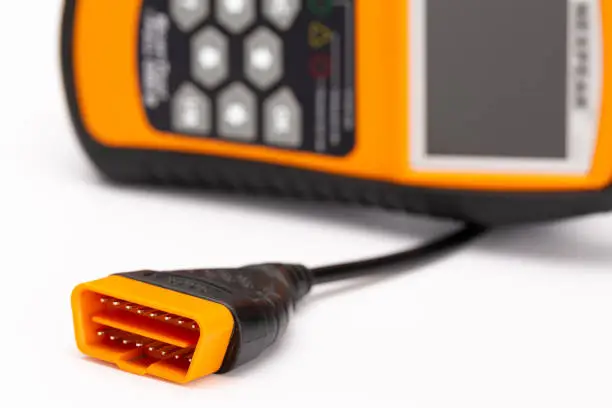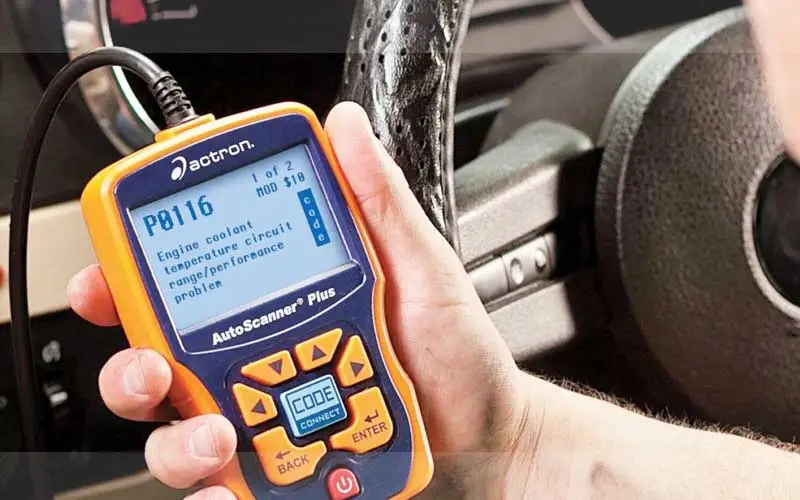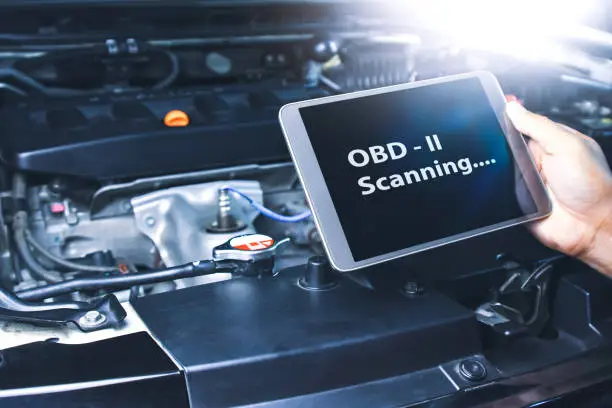Did you know that there is a diagnostic tool for your car that explains why the check engine light came on or what an error code means? It’s called an OBD2 or OBD II scanner.
It stands for On-Board Diagnostics and is what mechanics use when assessing issues. We’ve already told you about the best OBD2 scanners, but are they worth purchasing? Let’s dive into what OBD II scanners are and explore how they benefit you as a car owner.
What Does An OBD II Scanner Do?

It’s happened. The dreaded check engine light has come on, and your car is making a strange noise. Your local mechanic is closed, so it’s up to you to determine the cause of the light. Since most cars run on computers now, it’s harder to determine the reasoning behind the check engine light by just lifting the vehicle’s hood. This is where an OBD II scanner comes in handy.
An OBD II diagnostic scanner plugs into your car’s computer and relays error codes that dictate your car’s issue. It’s what any good repair shop technician will plug into your vehicle as soon as it arrives to start troubleshooting the problem. Every car has an OBD II port located somewhere on the dashboard, usually under the steering wheel, but it will vary based on the make and model of the car.
When plugged in, handheld OBD II scanners return fault codes or error codes that explain the cause of the check engine light or another issue. Tapping into your car’s computer is a quick, easy way to diagnose the problem.
AN OBD scanner gives you peace of mind with what is going on with your car and makes it easier for your car repairs. Rather than paying a local mechanic to find the problem, you can assess the situation yourself and present the code to the repair shop as an everyday car owner. Since most mechanics charge by hours of labor, this saves you money too.
What is The Difference between OBD and OBD II?
In our OBD vs. OBD II: What is the Difference article, we embellished the differences between OBD and OBD II scanners. Allow us to revisit and revise the differences a bit in this article.
To start, all modern cars have an OBD system. It is a computer in your car’s dashboard that allows your car to communicate via a network of sensors. This technology requires an OBD scanner that communicates with the OBD system to understand any issues that arise with the vehicle.

OBD I scanners are the original code scanner created to help mechanics understand fault codes in cars. It wasn’t highly intuitive as OBD I scanners were limited in the number of error codes they returned and provided little to no detailed information about the error. While having an OBD I scanner was better than nothing, and the technology was lacking.
After 1996, all car manufacturers required cars built with OBD II ports. It’s essential to mention that an OBD I and OBD II port are not interchangeable. OBD II scanners will not function in an OBD I port and vice versa. If your car was made after 1996, an OBD II scanner is what you will need to run a diagnostic check.
The technology has come a long way when it comes to OBD scanners. The OBD II scanners plug into your car and relay error messages and detailed descriptions of the problem. If the check engine light is on, it’s nice that your OBD II scanner will assess how problematic the situation might be. Some OBD II scanners will give you ways to fix the problem with your car. Whether you are comfortable working on your car or not, this helps the repair shop since you already know the error and the solution.
Specific OBD II scanners have Bluetooth capabilities to send information to an app. The app will break down the fault codes and give you more details about the problem and possible fixes. If an OBD II diagnostic scanner provides you with live data, that is even better. It’s like breaking into the car’s computer and seeing the problems as they happen. This information helps your mechanic further to navigate a possible fix.
Also Read : How to Use OBD2 Scanner?
How To Read OBD Codes

Don’t stress if you know absolutely nothing about cars. The OBD II scanners make things easy to understand. An OBD scanner can tell you some of the following information about your vehicle.
- Short and Long Fuel Trim (STFT and LTFT)
- Temperatures
- Air to fuel ratio
- Engine RPM
- Intake air temperature
There are many more diagnostics that OBD II scanners process, but these are some main ones. The temperatures of the air intake and engine coolant temperatures. If your car is running especially hot, there is a chance that something is causing one of these temperatures to escalate while the engine is running. Plugging in the OBD scanner will show you the different temperatures at specific times. This helps you to pinpoint when the temperature increase occurs.
The air vs. fuel ratio gives a percentage on the OBD scanner of how much air vs. fuel is being pumped into the engine. The STFT should generally range between 10% and -10%, and the LTFT should be between 5% and -5%. If the reading is above 0%, it means more fuel is being added than air, and if it’s below 0%, more air is being added than fuel. You can watch the fluctuation with live data to determine if one is overpowering the other and let your mechanic know the particulars.
Another air to fuel ratio determines how much of each is in the exhaust. The oxygen sensor’s voltage shows how efficient the balance is. When oxygen sensors are repeatedly at high or low voltages, something is happening with the air to fuel ratio in the exhaust.
We delve more into this with our How to Read Live Data From OBD II.
Final Thoughts
OBD II scanners are worth the purchase. For one thing, they are an inexpensive tool that brings you peace of mind. For another reason, they save you time and money at the repair shop. If you can give the mechanic a better idea of a reading from an OBD II scanner, they can repair your call faster and cheaper. You are taking some guesswork out of the issue and providing guidance directly from your car’s computer reading.

